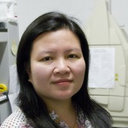Effects of sesamin on primary human synovial fibroblasts and SW982 cell line induced by tumor necrosis factor-alpha as a synovitis-like model.
Avainsanat
Abstrakti
BACKGROUND
Rheumatoid arthritis (RA) is an autoimmune disease that causes chronic synovitis, cartilage degradation and bone deformities. Synovitis is the term for inflammation of the synovial membrane, an early stage of RA. The pathogenesis of the disease occurs through cytokine induction. The major cytokine that increases the severity of RA is TNF-α. Thus, inhibition of the TNF-α cascade is an effective way to diminish the progression of the disease. We are interested in investigating the difference between primary human synovial fibroblast (hSF) cells and SW982 as synovitis models induced by TNF-α and in monitoring their responses to sesamin as an anti-inflammatory phytochemical.
METHODS
The designed experiments were performed in hSF cells or the SW982 cell line treated with 10 ng/ml TNF-α with or without 0.25, 0.5 or 1 μM sesamin. Subsequently, pro-inflammatory cytokine genes and proteins were measured in parallel with a study of associated signalling transduction involved in inflammatory processes, including NF-κB and MAPK pathways.
RESULTS
The results demonstrated that although hSF and SW982 cells responded to TNF-α induction in the same fashion, they reacted at different levels. TNF-α could induce IL-6, IL-8 and IL-1β in both cell types, but the levels in SW982 cells were much higher than in hSF cells. This characteristic was due to the different induction of MAPKs in each cell type. Both cell types reacted to sesamin in almost the same fashion. However, hSF cells were more sensitive to sesamin than SW982 cells in terms of the anti-RA effect.
CONCLUSIONS
The responses of TNF-α-induced hSF and SW982 were different at the signal transduction level. However, the two cell types showed almost the same reaction to sesamin treatment in terms of the end point of the response.


